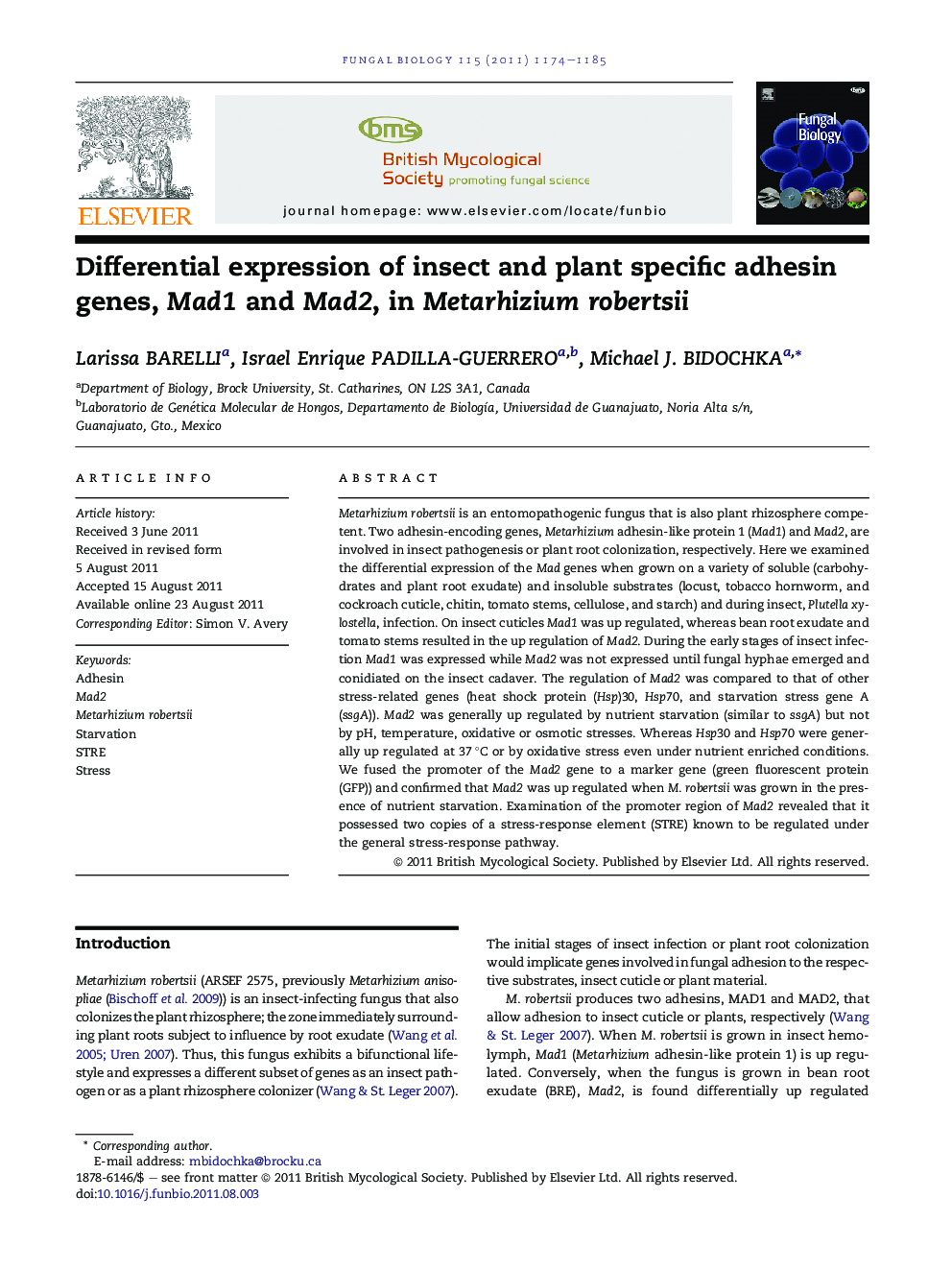| Article ID | Journal | Published Year | Pages | File Type |
|---|---|---|---|---|
| 4357156 | Fungal Biology | 2011 | 12 Pages |
Metarhizium robertsii is an entomopathogenic fungus that is also plant rhizosphere competent. Two adhesin-encoding genes, Metarhizium adhesin-like protein 1 (Mad1) and Mad2, are involved in insect pathogenesis or plant root colonization, respectively. Here we examined the differential expression of the Mad genes when grown on a variety of soluble (carbohydrates and plant root exudate) and insoluble substrates (locust, tobacco hornworm, and cockroach cuticle, chitin, tomato stems, cellulose, and starch) and during insect, Plutella xylostella, infection. On insect cuticles Mad1 was up regulated, whereas bean root exudate and tomato stems resulted in the up regulation of Mad2. During the early stages of insect infection Mad1 was expressed while Mad2 was not expressed until fungal hyphae emerged and conidiated on the insect cadaver. The regulation of Mad2 was compared to that of other stress-related genes (heat shock protein (Hsp)30, Hsp70, and starvation stress gene A (ssgA)). Mad2 was generally up regulated by nutrient starvation (similar to ssgA) but not by pH, temperature, oxidative or osmotic stresses. Whereas Hsp30 and Hsp70 were generally up regulated at 37 °C or by oxidative stress even under nutrient enriched conditions. We fused the promoter of the Mad2 gene to a marker gene (green fluorescent protein (GFP)) and confirmed that Mad2 was up regulated when M. robertsii was grown in the presence of nutrient starvation. Examination of the promoter region of Mad2 revealed that it possessed two copies of a stress-response element (STRE) known to be regulated under the general stress-response pathway.
► Insect cuticles induce Mad1 and root exudates induce Mad2, differentially. ► Mad1 up regulated during early stages of insect infection, Mad2 during late stages. ► Non-preferred carbohydrates up regulate Mad2. ► Mad2 induced by starvation, not pH, temperature, osmotic or oxidative stress. ► Mad2 promoter has two STREs and other elements regulated by limited nutrients.
